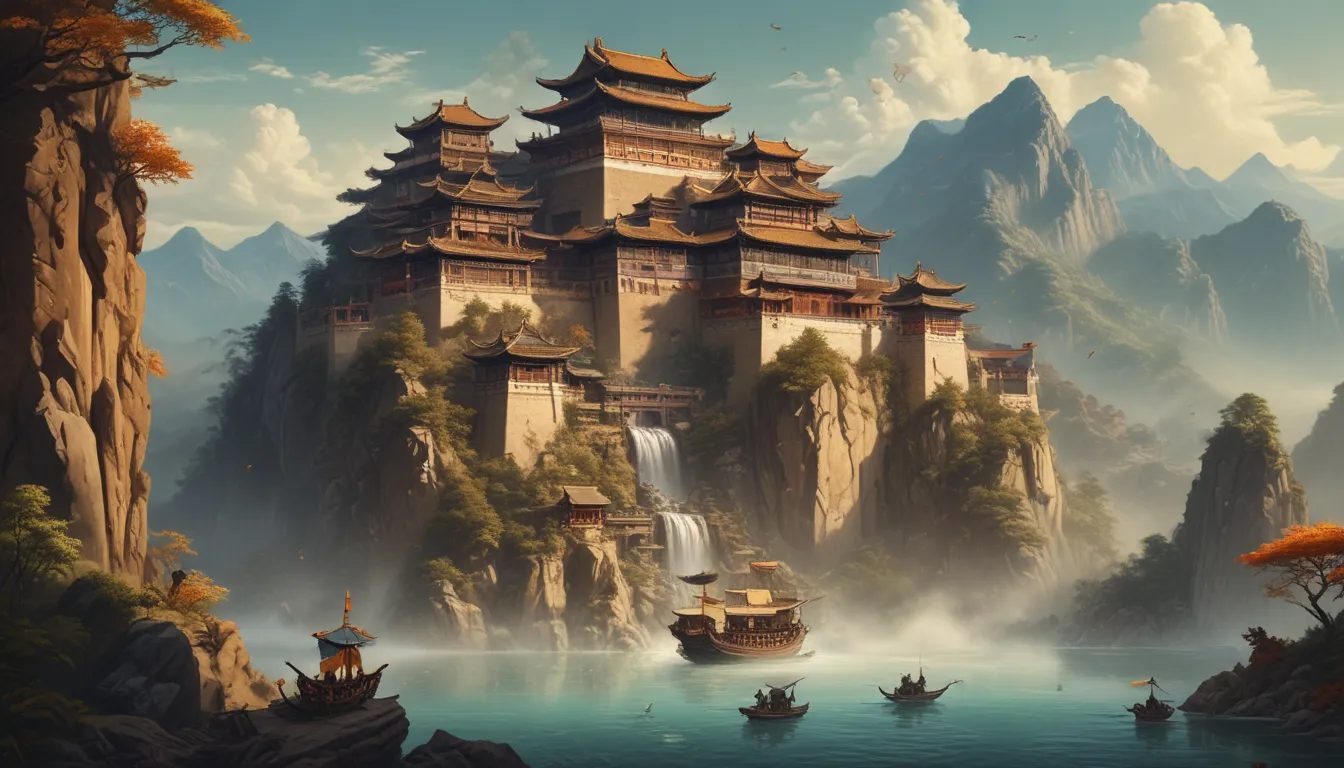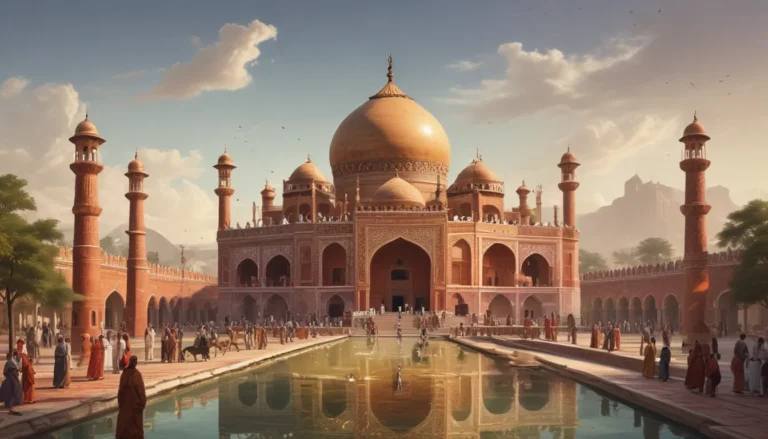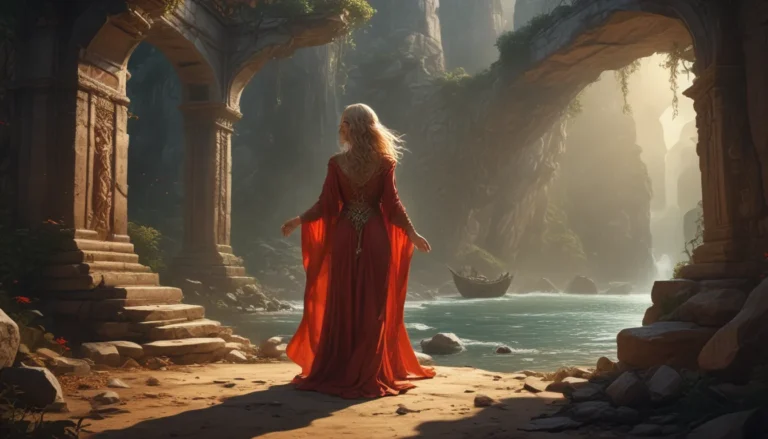The images in our articles may not match the content exactly. They are used to grab your attention, not to show the exact details in the text. The images complement the text but do not replace it.
Have you ever been curious about the illustrious Yuan Dynasty that once reigned over China? Prepare to be enthralled as we delve into this captivating era, established by the Mongol Empire under the reign of Kublai Khan. The Yuan Dynasty stands as a testament to the fusion of East and West, with its remarkable contributions to culture, technology, and governance shaping the course of history. Join us on a voyage back in time as we uncover the 16 most fascinating facts about the Yuan Dynasty, guaranteed to leave you in awe. From its grand capital to its influence on trade and exploration, brace yourself for an exploration of the rich tapestry of history woven by this extraordinary period.
The Genesis of the Yuan Dynasty
The inception of the Yuan Dynasty in 1271 by Kublai Khan, the grandson of Genghis Khan, heralded a momentous chapter in Chinese history. This era symbolized the amalgamation of Mongol rule and the unification of China under foreign dominion for the first time, blending military prowess with administrative practices.
- Kublai Khan’s conquest of the Southern Song Dynasty paved the way for the establishment of the Yuan Dynasty, marking a significant unification of China.
Cultural and Technological Prowess
The Yuan Dynasty witnessed a flourishing of cultural and technological advancements, characterized by its openness to foreign cultures. This openness led to an influx of innovative ideas, goods, and technologies that reshaped Chinese society. Notable developments include the introduction of paper money as a primary currency and the establishment of a unified Chinese postal system.
- The Yuan Dynasty played a pivotal role in revolutionizing the Chinese economy through the introduction of paper money.
- The establishment of a comprehensive postal system enhanced communication and connectivity across the vast empire.
The Epicenter: Dadu, the Glorious Capital
Under the reign of Kublai Khan, Dadu, known today as Beijing, was anointed as the capital of the Yuan Dynasty. This strategic move centralized power and laid the groundwork for Beijing’s emergence as a political and cultural epicenter in China.
- Dadu (Beijing) epitomized Kublai Khan’s vision of a unified and potent empire as the pulsating heart of the Yuan Dynasty.
The Silk Road Flourishes under Yuan Governance
The Silk Road, a network of trade routes bridging the East and West, thrived under the auspices of the Yuan Dynasty. The expansive reach of the Mongol Empire facilitated safer and more efficient trade, fostering cultural exchange between Asia and Europe.
- The Yuan Dynasty catalyzed the revitalization of the Silk Road, fostering a surge in trade and cultural interactions between continents.
Architectural Splendors of the Yuan Dynasty
A legacy of architectural grandeur was left behind by the Yuan Dynasty, exemplified by the expansion of the Grand Canal and the construction of the iconic Yuanmingyuan, known as the Old Summer Palace. These architectural marvels served as testaments to Chinese imperial power and artistic achievement.
- The expansion of the Grand Canal during the Yuan era bolstered transportation and trade networks within China.
- The construction of the Yuanmingyuan set a benchmark for imperial architecture in China.
Embracing Diversity: Foreign Influence in Yuan Society
Kublai Khan’s policies fostered the integration of foreigners into high-ranking government positions, citing their perceived trustworthiness due to their lack of local allegiances. This inclusive approach cultivated a cosmopolitan court, attracting talents from diverse regions.
- Foreign individuals held prominent roles in the Yuan government, contributing to its cosmopolitan and diverse nature.
The Twilight of the Yuan Dynasty
Despite its achievements, the Yuan Dynasty grappled with numerous challenges, including peasant uprisings, administrative corruption, and natural calamities. These tribulations, coupled with the dynasty’s inability to secure the loyalty of the Chinese populace, culminated in its eventual downfall.
- The Red Turban Rebellion, fueled by discontent among the Chinese populace, dealt a significant blow to the stability of the Yuan Dynasty.
- Economic woes and natural disasters exacerbated the dynasty’s vulnerabilities, hastening its demise.
Enduring Legacy of the Yuan Dynasty
The influence of the Yuan Dynasty extended far beyond its reign, leaving an indelible imprint on Chinese art, literature, and theater. Noteworthy works like “The Romance of the Three Kingdoms” attained classical form during this period, while the dynasty’s policies laid the groundwork for future dynasties.
- The Yuan Dynasty played a pivotal role in shaping Chinese literature, with works like “The Romance of the Three Kingdoms” achieving enduring acclaim.
- Reforms and policies of the Yuan Dynasty influenced the administrative practices of subsequent Chinese dynasties.
Global Reach of the Yuan Dynasty
The establishment of the Yuan Dynasty heralded a new era in global history, ushering in unprecedented cultural and economic exchanges between East and West. The dynasty’s dominion over the Mongol Empire facilitated extensive trade and cultural interconnections, shaping the trajectory of world history.
- The Yuan Dynasty’s rule initiated a truly global age, fostering connectivity and exchange between distant corners of the world.
- By controlling the Silk Road, the Yuan Dynasty played a pivotal role in the historical trajectory of globalization.
Transition from Mongol Rule to Han Governance
The decline of the Yuan Dynasty in 1368 paved the way for the ascendance of the Ming Dynasty, founded by Zhu Yuanzhang, a former monk turned rebel leader. This transition signaled the end of Mongol rule in China and the resurgence of Han Chinese governance.
- The rise of Zhu Yuanzhang and the establishment of the Ming Dynasty marked the conclusion of Mongol rule and a new beginning in Chinese history.
- The enduring influence of the Yuan Dynasty, with its blend of Mongol and Chinese elements, continued to shape Chinese culture and history post its collapse.
Reflections on the Magnificent Yuan Dynasty
As we traverse the annals of time, the splendor of the Yuan Dynasty unfolds before us in all its glory. From the visionary leadership of Kublai Khan to the enduring contributions to culture, economy, and global exploration, this epoch stands as a beacon in history. The dynasty’s innovative governance, receptiveness to diverse cultures, and strides in various domains laid a solid foundation for future generations. Reflecting on these enthralling facts, it becomes evident that the Yuan Dynasty transcended mere Mongol dominance in China, marking a pivotal juncture that resonated across the tapestry of world history. Its legacy, intertwined with contemporary cultural and technological advancements, continues to inspire and enlighten. As we transition back to the present, let us carry forth the lessons and wonder kindled by this extraordinary chapter in human civilization.
Your Feedback Matters
At the core of our mission lies a dedication to providing engaging and credible content to our readers. Each fact shared on our platform is a contribution from individuals like you, enriching our database with diverse insights and information. Our team of editors diligently reviews each submission to ensure accuracy and reliability. Rest assured, as you explore and learn with us, that our commitment to quality and authenticity remains unwavering. Trust in our pursuit of excellence as we journey together through the realms of knowledge and discovery.






